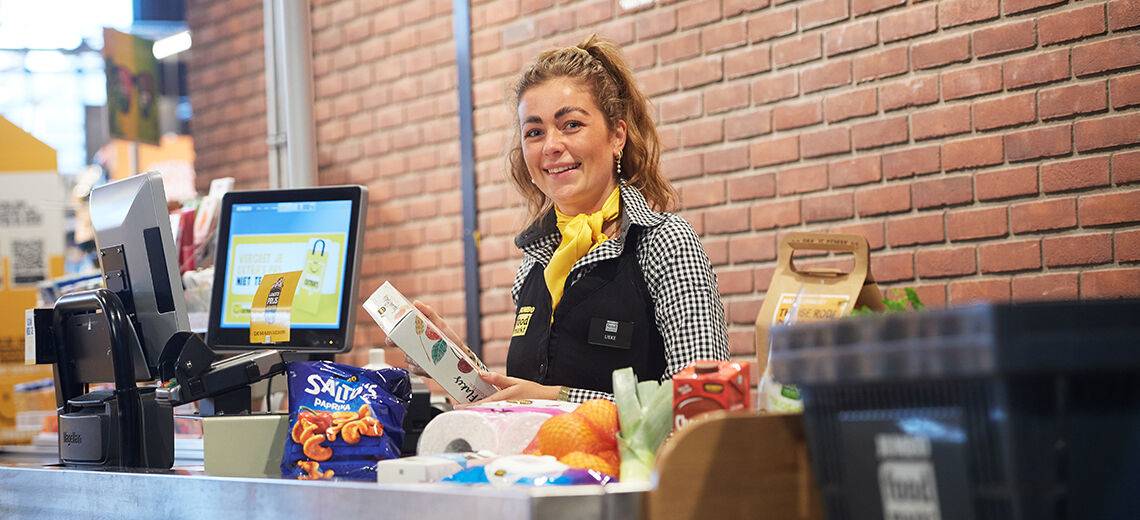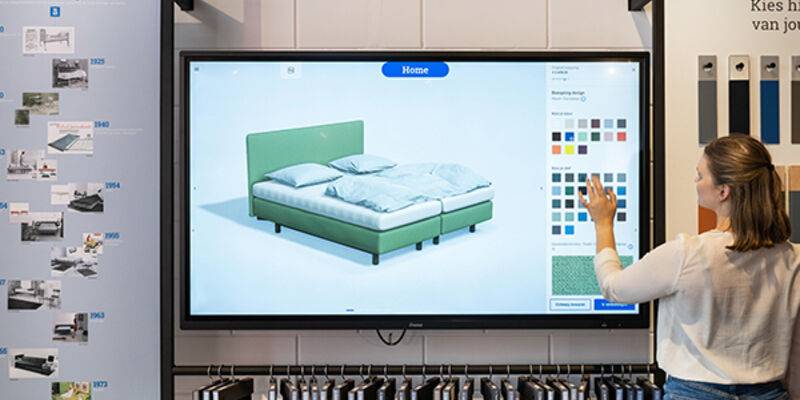Over a year and a half ago, Jumbo and Simac together took the first steps on the XLA path. More than ever, the focus is on the X of Xperience: how satisfied are Jumbo store employees with the services offered? Now that the first results are visible, it is time for Jumbo and Simac to further intensify their cooperation.

At Jumbo, they always put the customer first, as evidenced by, among other things, the list of 7 certainties that the supermarket chain uses as a guide in its doings. With the XLA (Xperience Level Agreement) approach launched eighteen months ago, Jumbo's IT team also puts its own internal customers first. "Those customers are our IT users or, in other words, our own employees in stores, distribution centers, hubs and headquarters," states Dimitri Schippers, who, as lead service delivery manager within Jumbo, is responsible for IT services.
Jumbo has placed much of that service with Simac, which provides, among other things, the service desk and field service for the stores, management of the SAP system and management of the infrastructure. When Simac came up with the proposal to upgrade the traditional Service Level Agreement (SLA) to an Xperience Level Agreement (XLA), Dimitri was immediately enthusiastic.
We were used to looking primarily at the processes and their concrete output. The technology was central. With an XLA, it's more about how our employees experience the use of that technology and the service around it. We are convinced that a satisfied store employee leads to a better store and thus ultimately positively affects consumer satisfaction."
Insights into perception
The XLA approach provides new insights. Of course, before, if a store employee reported an incident with a device or application, the problem was fixed as quickly as possible. Simac and Jumbo used that incident data to expose weak spots in IT and structurally fix them. But not every problem or inconvenience was reported immediately, Dimitri now notices. "At the start of the XLA approach it appeared that store employees were least satisfied with the performance of the infrastructure, but the service desk did not receive many reports about this at all. Employees did sound the alarm when the network was down, but took something like a temporary delay for granted. Or they applied their own solutions such as pressing the reset button," Dimitri explains.
The experience data is the result of structural and periodic employee satisfaction surveys. A satisfaction survey was already common practice within Jumbo, but it only took place once a year. The results were neatly delivered in the form of a report and were always positive, so everyone quickly went back to business as usual. "Now we measure satisfaction more frequently. More importantly, after each incident we ask employees how they experienced its handling. By measuring sentiment more frequently, we get a much better picture of the perception and can more actively manage customer satisfaction."
''We want Simac to manage a large part of the IT ecosystem on behalf of Jumbo.''
Direct contact
How to shape the XLA approach was a quest for both Simac and Jumbo. Simac enlisted the help of Giarte, the agency that introduced experience thinking in IT. Dimitri's team followed an XLA training at Giarte, so that Jumbo also had the necessary theoretical baggage.
"In addition, we agreed to embark on this journey together and not let contractual rules hold us back too much. We have a common goal, improvement in customer satisfaction, and have examined together what we need to do to achieve this."
A year and a half ago, Jumbo and Simac actually started the first step: drawing up the questionnaires used to measure customer satisfaction. A difficult job, because the exact wording of the questions determines the quality of the feedback. The second step was to determine the frequency at which the questionnaires are sent out. This also listens closely, because if employees face the questionnaire too often, their willingness to fill it out decreases. "Currently, we see that only a small group of store employees respond to the questionnaire. A low response rate is fairly market-based, but we believe we can still influence this positively. Nevertheless, we are already getting a lot of value from the feedback we have received so far," says Dimitri.
Simac and Jumbo are not satisfied with just the answers from the questionnaires. They obtain the most valuable information from the contact with the employee in response to the answers. "That contact is perhaps the most important. Employees feel heard," states Dimitri. "Moreover, not everyone is equally capable of describing their problems precisely. During a telephone conversation or visit to the store it then really becomes clear what the issue is. We also then discover that many problems only occur during specific tasks at specific times."

Performance Indicators
A normal SLA establishes standard performance indicators such as IT system uptime and incident response time. Experience data provide insight into the score on completely different indicators, so-called xperience indicators (XIs). For example, satisfaction with the assistance provided and the user-friendliness of IT solutions. "Then it often turns out that the technology is not the biggest problem, but the way a failure is handled or the feedback about it. Much of the dissatisfaction has to do with interaction and communication," Dimitri points out.
The insights from the experience data have now led to concrete measures. One example is the speed with which cash register malfunctions are fixed. The SLA between Jumbo and Simac stipulates what percentage of the cash registers must be in operation. If that percentage is not achieved, the urgency rises and Simac must act sooner to repair a faulty cash register. "We scored fine on all performance indicators, but still some stores were not satisfied," says William Ponsteen, who as senior project manager within Simac IT NL is responsible for the XLA process at Jumbo.
"These were particularly the stores in neighborhoods where cash is still relatively common. According to the SLA, if one of the last two traditional cash registers was not working, it was not an urgent problem while the store employees felt it was. We have now instructed the service desk that a technician may be sent to the store in such cases. This was relatively easy to adjust and immediately increased customer satisfaction."
Customer-friendly
In mid-2022, the XLA process really started with the first questionnaires being sent around. So the amount of experience data is limited, yet Dimitri already sees an upward trend when it comes to customer satisfaction. "I also notice this from the personal responses I receive from the organization. Of course I still get questions from stores about IT problems, but I ask them to use the questionnaires so that we can measure whether more stores are experiencing the same problems. That's how we try to increase the response from the organization. We have a group of employees who actively fill out the questionnaires, but they are a minority for now."
Gradually it is time to take the next step, Dimitri states. "We have already done the necessary things to make the service more customer-friendly. This is relatively simple; the service desk phone script has been quickly modified. The next step is to implement technical improvements. That is a lot more difficult, because to do so we need to take the cooperation with Simac and all internal and external service providers to an even higher level. We need those developers to actually make software systems more customer-friendly, for example."
Mandate
Jumbo looks back on the start of the XLA process with satisfaction:
"I am pleased that Simac has a team that pays attention to this. Partly because of this, it has now dawned on all employees that we need to look at the service we provide to our IT users in a different way."
With the new contract signed by Jumbo and Simac, the cooperation gets an extra boost. With that contract, Jumbo explicitly opts for the SIAM concept: Service Integration and Management. "For us, the XLA process is part of a bigger picture," Dimitri explains. "We want Simac to manage a large part of the IT ecosystem on behalf of Jumbo. In other words: Simac gets the mandate from us to intensify cooperation with external IT suppliers. Simac knows what we want and knows all IT suppliers best. If we clearly define the frameworks, Simac can orchestrate the ecosystem within those frameworks. As a result, Simac is able to maximize service improvement and together we put the customer first."










